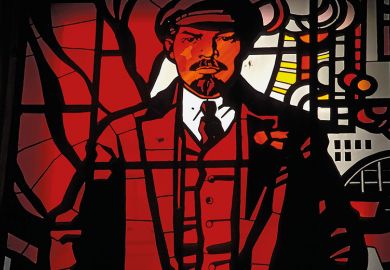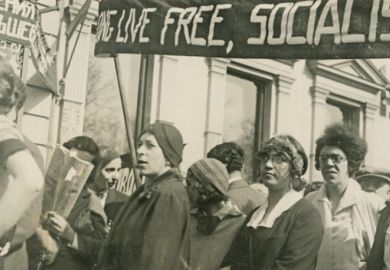In Paul Mazursky’s 1984 film Moscow on the Hudson, the late Robin Williams played a Soviet circus musician who defects to the United States clutching a pair of jeans in the Bloomingdale’s department store. Leaving everything he knew behind, the character dives head first into an émigré’s life in New York City, and the story explores the tensions between the Soviet idealisation of America and the brutal realities of crime, poverty and homelessness. As I read through Eleonory Gilburd’s delightful new book, To See Paris and Die, I kept thinking of Moscow on the Hudson’s protagonist collapsing to the floor in shock when faced with grocery shelves packed with more than 10 different brands of coffee.
The book examines the curious circulation of Western cultural products imported into the Soviet Union after Stalin’s death in 1953 during the period known as The Thaw. Although it is often imagined as a closed and insular society, Gilburd reveals the extensive Soviet cultural appropriation of Western arts, music, books and cinema during the 1950s and 1960s. In the name of internationalism, peaceful co-existence and mutual understanding, the leaders of the USSR translated and dubbed western European and American classics into Russian, making them widely accessible to citizens from all walks of life. These uniquely Soviet interpretations of Western cultural production took on a life of their own, and sparked the imagination of generations prevented by travel restrictions from visiting the literary cities of their dreams.
Gilburd has a rich and exhaustive evidentiary base in the Soviet archives, and one of the most delightful aspects of this history is her focus on the reception Western works received among Soviet audiences. One telling example is the 1956 Picasso exhibition at the Hermitage and the Pushkin Museum, where defenders of socialist realism and proponents of modernism shouted at each other or came to blows. Gilburd recounts passages from the journals of contemporary artists for whom the exhibition was an ideological bombshell, shattering the state’s aesthetic monopoly on visual art. Similarly, she explores local reactions to Soviet travelogues about the West, and especially the United States. When authors recounted tales of vagabonds and joblessness, of garish billboards and urban decay, readers only saw anti-capitalist propaganda. Gilburd aptly explains how the circulation and consumption of Western cultural products in an autocratic nation that limited foreign travel fuelled the fantasy of a paradise where the streets were proverbially paved with gold.
Especially poignant is the book’s epilogue about the cognitive dissonance experienced by Soviet émigrés to the United States both before and after the collapse of the USSR. According to Gilburd, immigrants to the United States were astonished at the provinciality and banality of the ordinary Americans they met. Like Robin Williams’ character in Moscow on the Hudson, most Soviet citizens were in for a rude awakening when they finally made it to the spiritual paradise of their dreams. “The country of understated emotions and courageous adventurers, glamorous women and elegiac jazz,” Gilburd writes, “turned out to be philistine, parochial, and calculating, [just] as Soviet travelogues had warned all along.”
Kristen R. Ghodsee is professor of Russian and East European studies at the University of Pennsylvania and the author of Why Women Have Better Sex Under Socialism: And Other Arguments for Economic Independence (2018).
To See Paris and Die: The Soviet Lives of Western Culture
By Eleonory Gilburd
Harvard University Press
480pp, £25.95
ISBN 9780674980716
Published 25 January 2019
Register to continue
Why register?
- Registration is free and only takes a moment
- Once registered, you can read 3 articles a month
- Sign up for our newsletter
Subscribe
Or subscribe for unlimited access to:
- Unlimited access to news, views, insights & reviews
- Digital editions
- Digital access to THE’s university and college rankings analysis
Already registered or a current subscriber?








